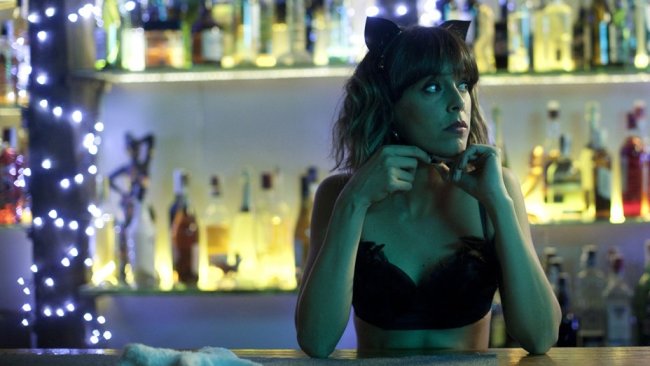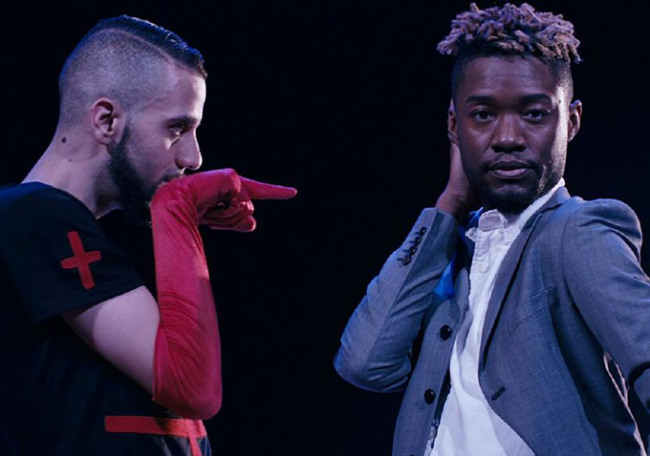LOS ANGELES -- The various bodies moving through “Kiki,” an energetic and enveloping documentary about New York City’s LGBT ballroom scene, are capable of astonishing, even superhuman physical feats. They dance and gyrate on underground subway platforms, down half-empty streets, and on the grass at Christopher Street Pier. They pour themselves into stunningly elaborate costumes before hitting the dance floor, performing under hot lights, thundering music and the eyes of hundreds of enthusiastic onlookers.
But of all the remarkable things they can do, few are as galvanizing as when they simply stop moving and stare into the equally motionless camera, as though daring us to look deeper. And the director, Sara Jordeno, more than obliges. Much as Jennie Livingston did in “Paris Is Burning,” her landmark 1990 portrait of New York’s drag-ball culture, Jordeno finds revelatory moments of warmth and intimacy in this stylish, spirited performance space -- a public realm that offers acceptance, empowerment and advocacy to those who need it desperately.
 |
Still from “Kiki” (Sundance Selects) |
The documentary cuts briskly among seven young principals, all of them LGBT people of color, letting them show off their moves and tell their personal stories. Twiggy Pucci Garcon (who co-wrote the film with Jordeno) and Chi Chi Mizrahi, two prominent leaders on the Kiki scene, introduce us to the structure of this ballroom community’s various houses, where LGBT youth form makeshift families -- complete with house mothers and house fathers, who are typically not much older than their adopted children. These enclaves also serve as competitive dance troupes, their individual styles irresistibly summed up by names such as House of Juicy Couture and House of Unbothered Cartier.
The art of voguing, with its dramatic poses and striking costumes, offers these young artists an opportunity to blur the lines of masculine and feminine representation, and to escape what they see as the tyranny of heteronormative culture. But while the dance footage in “Kiki” is often electrifying (especially when backed by a score composed by the ballroom collective Qween Beat), it largely takes a backseat to the interviews, which show us how Jordeno’s subjects have tried to break down the same barriers in their lives and activism.
Several subjects talk about coming out years earlier and feeling the sting of rejection from their families. Divo Pink Lady describes his experience of homelessness after being thrown out by his folks, as well as the homophobia he routinely experienced at the hands of West Village police officers. Christopher Waldorf recalls a childhood memory of dancing to 112’s sexually charged hit “Peaches and Cream,” to his father’s chagrin.
 |
Still from “Kiki” (Sundance Selects) |
Gia Marie Love, a transgender woman whom we see at different stages of her transition, had an easier time being embraced by her family. (“I think she’s sexy,” her mother says on camera. “Like me.”) Yet there’s also a telling, caught-on-the-fly moment in which Love is shown being verbally harassed on the street by young kids who, while probably meaning no harm, are already showing signs of ingrained anti-LGBT hostility.
“Kiki” is, among other things, a record of that hostility. It’s a film of unmistakably and unapologetically political intent -- not only in its focus on mostly black and Latino youth, but also its willingness to give significant emphasis to transgender issues. And it shines an affecting light on the challenges these young men and women face just trying to survive, including bouts of homelessness and physical abuse as well as the high cost of HIV treatments and hormone therapy.
First shown more than a year ago at the 2016 Sundance Film Festival, Jordeno’s movie is opening in a political climate that, in light of the recent withdrawal of federal protections for transgender students, already feels considerably more antagonistic toward LGBT civil rights.
For all that, the movie’s pleasures remain undimmed, and perhaps even burn a little brighter. “Kiki” often casts a rueful gaze, but it’s also exuberant and alive, and never despairing. It leaves you with the bracing sense that however tough and resilient its subjects might be forced to become, their hope of a better, more tolerant future will never go out of style. (Tribune Content Agency)
By Justin Chang
Los Angeles Times









